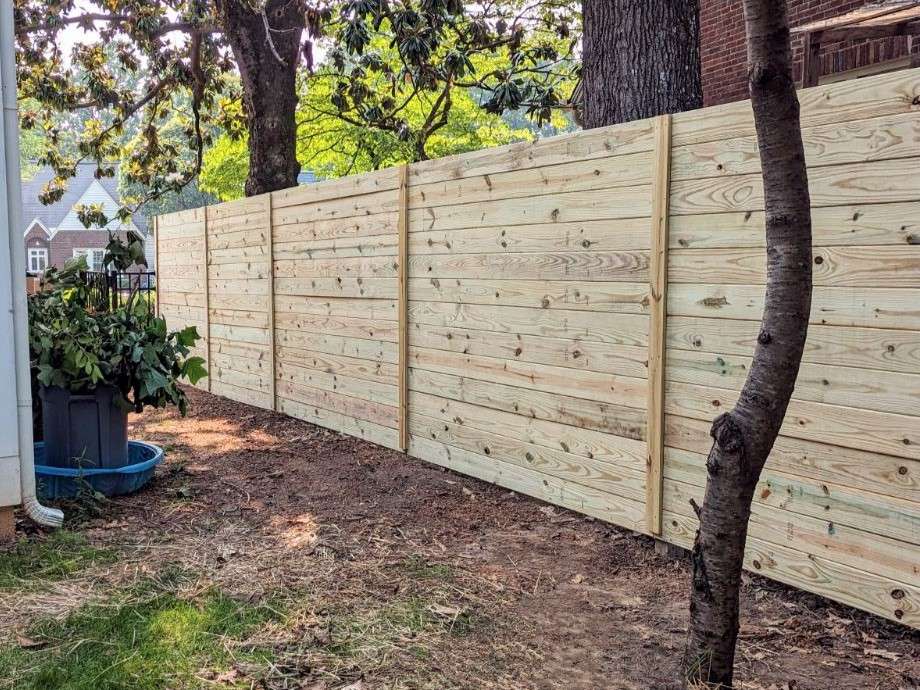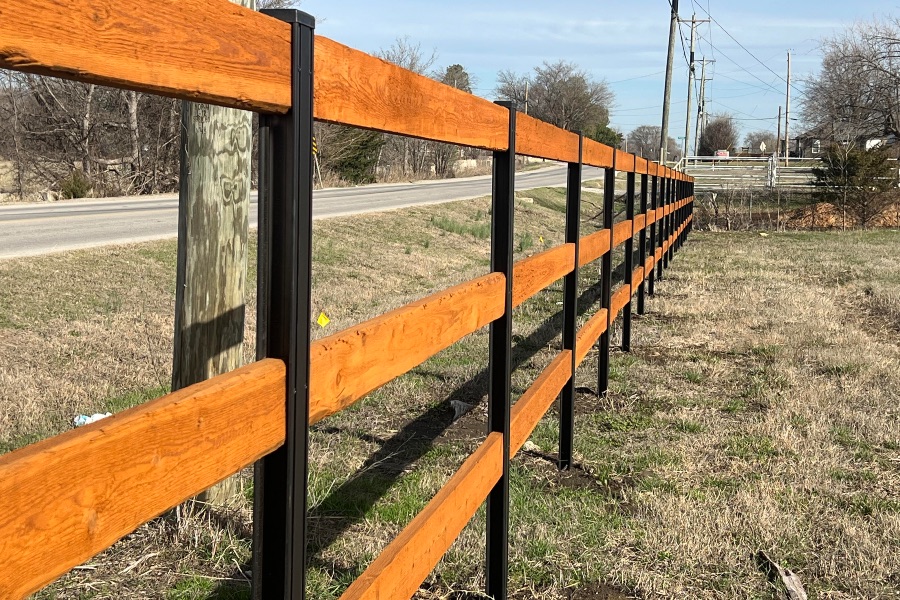All Categories
Featured
When protecting your residential property, picking the appropriate fencing height is essential for both personal privacy and safety. The height of your fence plays a significant role in figuring out just how efficient it will go to protecting your home or business from trespassers. While a high fence might appear like the most effective alternative, the optimal height depends on several aspects, consisting of security requirements, local regulations, and the materials used. Listed below, we'll describe key factors to consider to assist you select the ideal fencing elevation for optimum safety.
![]()
If you stay in a community controlled by a property owners' association (HOA), you ought to likewise evaluate any type of certain standards they have for fence height, design, and materials. Following these regulations ensures you avoid lawful issues and preserve an excellent partnership with your next-door neighbors.
Taller fencings are more hard to range and can considerably minimize the probability of burglaries. Including features like sharp tops, barbed cord, or even electric fencing can better increase the barrier's protection. A fence that gets to 8 feet or higher is frequently efficient at protecting against most individuals from quickly leaping over it.
![]()
Wooden Fencings: While wood fencings offer privacy, they can be easy to climb up, particularly if there are no anti-climb attributes. For maximum safety and security, consider a wood fencing that's 6 to 8 feet high with sharp tops or trellis extensions that make it more difficult to scale. Chain-Link Fences: Chain-link fencings are often more sturdy and affordable than wood, and they can be constructed to the needed elevation for safety and security. To enhance deterrence, consider adding barbed or razor cable ahead. These functions discourage climbing up and make the fence extra tough to violation. Wrought Iron Fences: Wrought iron fencings are frequently used for high-security purposes since of their stamina and resilience. Their upright bars make it challenging to climb, and they can be created to 6 to 8 feet high with added spikes or decorative anti-climb functions to additional protect the perimeter. Vinyl Fences: Plastic is a superb choice if you need a strong, personal fence, but like timber, plastic fences might require extra elevation or safety features to hinder climbing up. Select a fencing that goes to the very least 6 feet high to make certain privacy and protection. Each product offers various benefits in regards to visual appeals, sturdiness, and maintenance, so it's crucial to consider your specific needs and choices when choosing a fencing.
Anti-Climb Features: Setting up sharp or sharp tops, trellis expansions, or safety spikes at the top of the fence makes it harder for any individual to scale the fencing. These functions serve as a solid deterrent to possible burglars. Barbed or Razor Cord: Including barbed cable or razor wire on top of your fencing enhances security substantially. This is commonly used in high-security areas, such as commercial buildings, but can additionally be a great choice for domestic buildings in high-risk locations. Electric Secure fencing: For top-level safety and security, you might wish to think about adding an electrical fence to your property. Electric fence, when set up appropriately, can create a solid deterrent while continuing to be reasonably very discreet. It provides a mild shock to anybody that attempts to climb up the fence or touch. Incorporating elevation with these added features ensures that your fencing supplies the highest possible degree of protection.
Balancing the demand for privacy and security while maintaining the visual charm of your property can assist you choose the appropriate height and product for your fence. Make certain that your fencing complements the general design of your home and does not negatively influence the visual appeal.
![]()
By carefully thinking about all these elements, you can develop a secure, private, and eye-catching boundary around your residential or commercial property that supplies both peace of mind and security.

- Understand Local Laws and Zoning Regulations. The very first step in picking your fencing height is to familiarize on your own with regional guidelines. Several municipalities have zoning regulations that dictate the optimum allowable elevation for fencings, specifically in front lawns and along residential or commercial property lines. Usually, front backyard fences are restricted to 3 to 4 feet, while backyard fencings can be as high as 6 to 8 feet or more. Some areas may require a license for fencings over a specific height, so it's crucial to get in touch with your regional zoning workplace prior to starting construction.
If you stay in a community controlled by a property owners' association (HOA), you ought to likewise evaluate any type of certain standards they have for fence height, design, and materials. Following these regulations ensures you avoid lawful issues and preserve an excellent partnership with your next-door neighbors.
- Figure Out the Desired Level of Safety And Security. The degree of safety you require is a major aspect in figuring out the ideal fencing height. A fence elevation of 6 to 8 feet is usually recommended for ideal protection.
Taller fencings are more hard to range and can considerably minimize the probability of burglaries. Including features like sharp tops, barbed cord, or even electric fencing can better increase the barrier's protection. A fence that gets to 8 feet or higher is frequently efficient at protecting against most individuals from quickly leaping over it.
- Select the Right Material for Your Fence. The material of your fencing plays an important duty in its capacity to offer protection. While taller fences are much better for safety, the sort of material you use can impede the efficiency or boost of the elevation. Right here are some preferred fence products for security:

Wooden Fencings: While wood fencings offer privacy, they can be easy to climb up, particularly if there are no anti-climb attributes. For maximum safety and security, consider a wood fencing that's 6 to 8 feet high with sharp tops or trellis extensions that make it more difficult to scale. Chain-Link Fences: Chain-link fencings are often more sturdy and affordable than wood, and they can be constructed to the needed elevation for safety and security. To enhance deterrence, consider adding barbed or razor cable ahead. These functions discourage climbing up and make the fence extra tough to violation. Wrought Iron Fences: Wrought iron fencings are frequently used for high-security purposes since of their stamina and resilience. Their upright bars make it challenging to climb, and they can be created to 6 to 8 feet high with added spikes or decorative anti-climb functions to additional protect the perimeter. Vinyl Fences: Plastic is a superb choice if you need a strong, personal fence, but like timber, plastic fences might require extra elevation or safety features to hinder climbing up. Select a fencing that goes to the very least 6 feet high to make certain privacy and protection. Each product offers various benefits in regards to visual appeals, sturdiness, and maintenance, so it's crucial to consider your specific needs and choices when choosing a fencing.
- Add Safety And Security Functions for Extra Defense. While height is important, including extra security features to your fencing can raise its efficiency. Think about the complying with enhancements:
Anti-Climb Features: Setting up sharp or sharp tops, trellis expansions, or safety spikes at the top of the fence makes it harder for any individual to scale the fencing. These functions serve as a solid deterrent to possible burglars. Barbed or Razor Cord: Including barbed cable or razor wire on top of your fencing enhances security substantially. This is commonly used in high-security areas, such as commercial buildings, but can additionally be a great choice for domestic buildings in high-risk locations. Electric Secure fencing: For top-level safety and security, you might wish to think about adding an electrical fence to your property. Electric fence, when set up appropriately, can create a solid deterrent while continuing to be reasonably very discreet. It provides a mild shock to anybody that attempts to climb up the fence or touch. Incorporating elevation with these added features ensures that your fencing supplies the highest possible degree of protection.
- Take Into Consideration Privacy and Aesthetic Preferences. While security must be your key problem, it's also essential to think about the visual charm of your fence. Tall fences may supply security, but they can sometimes appear enforcing or unfriendly. If privacy is a problem, a strong wood or vinyl fencing can supply both security and privacy, while a wrought iron fencing provides safety with an open sight.
Balancing the demand for privacy and security while maintaining the visual charm of your property can assist you choose the appropriate height and product for your fence. Make certain that your fencing complements the general design of your home and does not negatively influence the visual appeal.

- Last Thoughts on Fencing Height and Security. Choosing the best fencing height for optimum security entails stabilizing numerous variables, including regional policies, the degree of security required, the product of the fence, and added security functions. In general, a fencing height of 6 to 8 feet is perfect for most household homes, with taller fencings giving an included layer of protection for risky locations.
By carefully thinking about all these elements, you can develop a secure, private, and eye-catching boundary around your residential or commercial property that supplies both peace of mind and security.
Latest Posts
Reasons Consistent Vehicle Maintenance at Montclare Auto Repair Saves You Money
Published May 30, 25
1 min read
Enhance Your Property with Expenses Door Systems
Published May 27, 25
1 min read
Experience WyHy FCU – High Rewards for Members
Published May 25, 25
1 min read